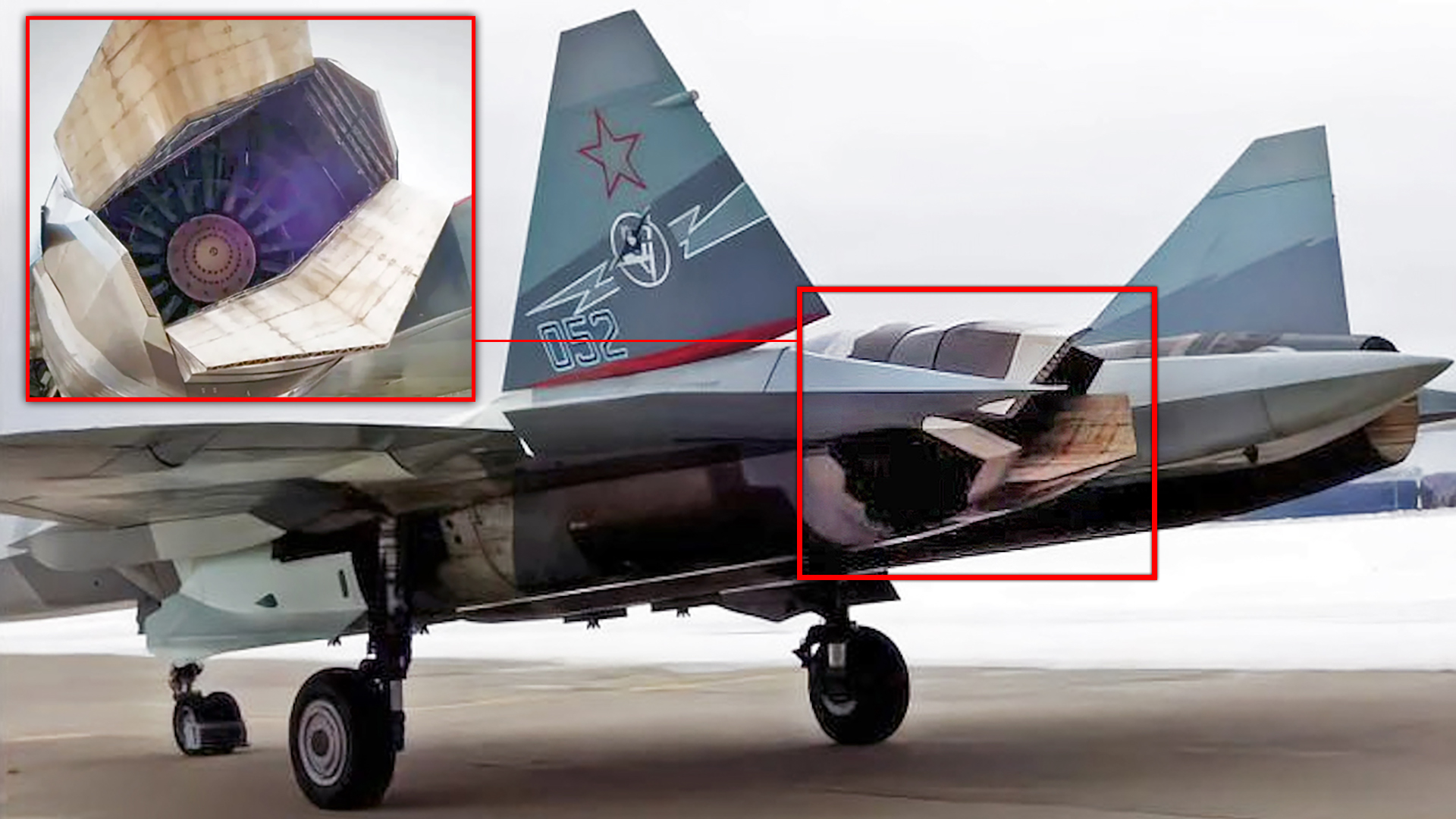Imagery has appeared showing Russia’s Sukhoi Su-57 Felon advanced fighter fitted with a new type of thrust-vectoring engine nozzle. The radical-looking exhaust design is intended to improve the low-observable features of the Felon, although the future of the new nozzle is far from certain.
The videos and photos show the rear aspect of the second flying prototype for the Su-57 program, T-50-2, which was first flown in March 2011. It was subsequently used to test the improved AL-51F-1 (also known as izdeliye 30) turbofan, which was first flown in December 2017 — with just one of the engines installed in the aircraft, alongside one of the original AL-41F-1s.
What’s notable about the turbofan seen fitted in the left engine nacelle of the T-50-2 is its nozzle, which is an example of the new flattened version that is intended to equip the AL-51F1 once it’s installed in the improved Su-57M version of the fighter. So far, no orders have been placed for this variant of the aircraft.
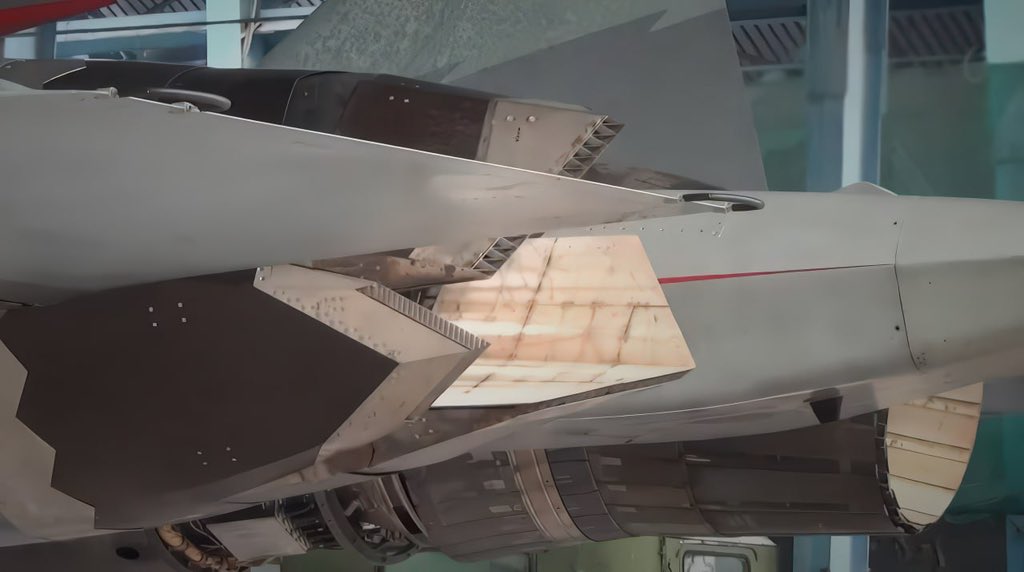
The AL-51F-1 was developed as a ‘clean-sheet’ design, intended to offer increased thrust, lighter weight, and lower operating costs compared with the previous AL-41F-1. Another drawback of the earlier engine is its inability to provide the Su-57 with supercruise performance — flying over Mach 1.0 for sustained periods without using afterburners.
At this point, it’s worth looking at the AL-41F-1, the original engine for the baseline Su-57, and its nozzle configuration. This turbofan is also used, in a simplified form, in the Su-35 Flanker multirole fighter. The AL-41F-1 (also known as izdeliye 117) was produced by modernizing the existing AL-31F engine used in the earlier Su-27 and Su-30 Flanker series fighters.
Video of the Su-57, showing the original three-dimensional thrust-vectoring nozzles:

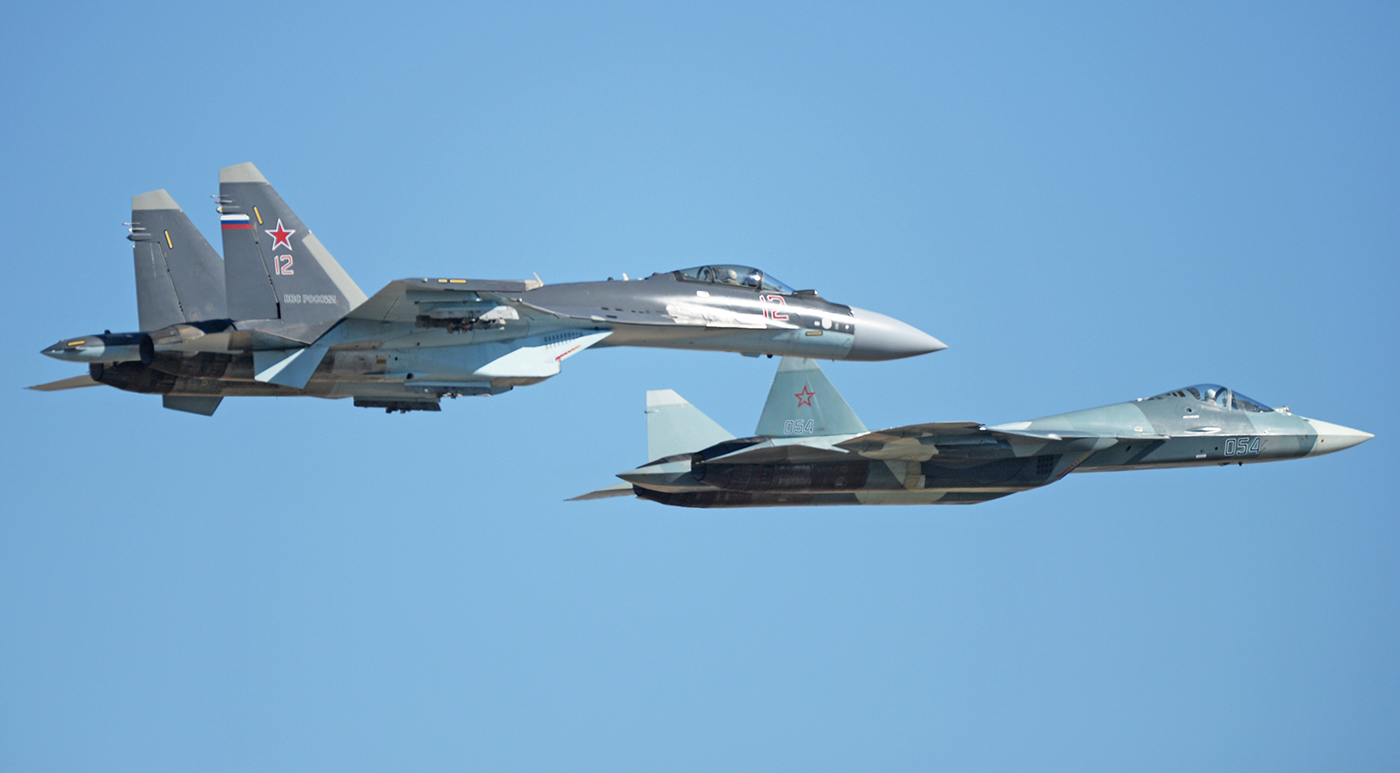
Video of the Su-30MKM, which uses a similar three-dimensional thrust-vectoring setup as the Su-35:

In the Su-57 and the Su-35, the AL-41F-1 features a thrust-vectoring nozzle of axisymmetric type. This is also known as three-dimensional thrust vectoring and provides pitch, yaw, and roll control.
In its initial form, the AL-51F-1 also retains a similar three-dimensional thrust vectoring nozzle, but what we see in the new imagery is an alternative nozzle, this time of the two-dimensional type, which provides pitch control as well as limited roll control if engaged asymmetrically. It isn’t clear if the angled installation of the nozzle is meant to provide extra control in the latter.
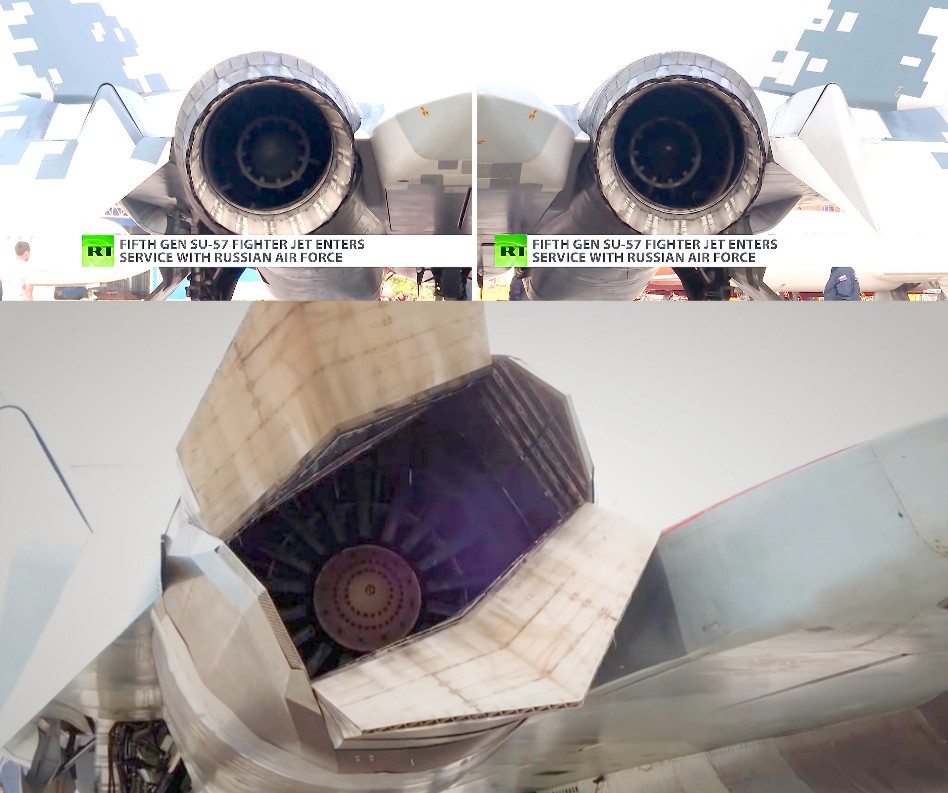
This kind of stealthy ‘flat’ engine nozzle is also used on the F-22 Raptor, for example, and is primarily chosen to reduce radar signature compared with an axisymmetric nozzle design. It also provides infrared signature advantages, as well.
According to Yevgeny Marchukov, CEO of the Arkhip Lyulka Design Bureau responsible for the AL-51F-1, in comments reported by Aviation Week, Sukhoi was not interested in using a flat nozzle for the Su-57 when that program was launched. Only later was the two-dimensional nozzle ordered, after the Su-57 and the AL-51F-1 were flying.
Since Sukhoi “resists changes to the airframe itself,” Marchukov explained, “That’s why we came up with a rather complex flat nozzle.”
As seen in the diagram below, the nozzle has four independently controlled flaps, which work by modifying the air outlet cross-section and thrust vector. Of these flaps, which are installed at an angle, two are reportedly tailored for use in the subsonic regime and two for supersonic flight. The images also appear to show the vectoring flaps being vented, which, when combined with air forced through these areas, would help cool the exhaust and lower the aircraft’s infrared signature.
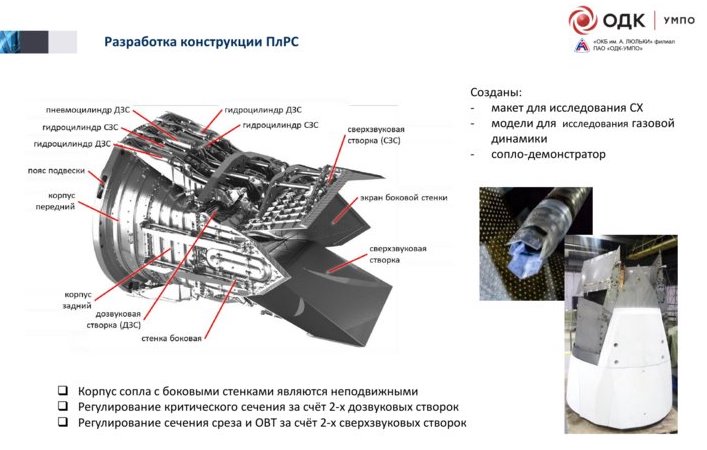
Speaking in the summer of 2023, Marchukov confirmed that the new nozzle had been successfully run on a ground testbed, including with afterburning. He added that a first flight was expected before the end of 2023, although there’s no record of whether that ever happened.
For the Su-57, the flat nozzle would bring notable advantages in terms of improving its low observability from the rear aspect. The original design of the Felon optimized low observability from the frontal aspect, with less attention paid to the side and rear aspects. At the same time, the revised nozzles will reduce thrust output to some degree, but this is clearly considered a worthwhile penalty based on the improved low-observable aspects it brings, which are badly needed for the type.
It’s also worth noting that another flat nozzle design has been developed for the version of the AL-41F-1 engine used in the Sukhoi S-70 Okhotnik heavy subsonic uncrewed combat air vehicle. In this case, the two-dimensional nozzle is intended to reduce the infrared and radar signatures, but it’s far simpler, without any vectoring controls.
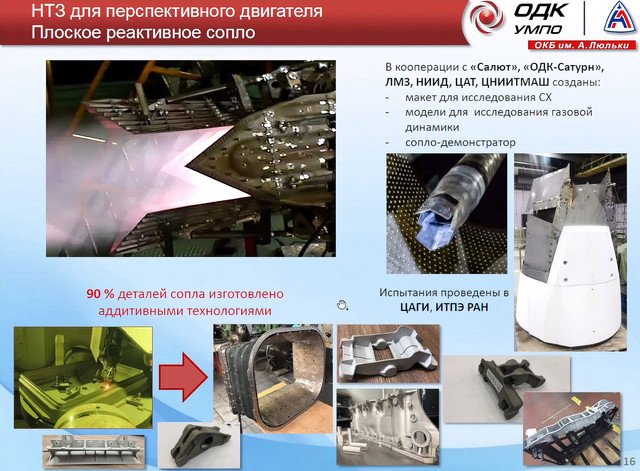
The Okhotnik was first flown with an interim engine, with a standard round nozzle, but the revised nozzle was fitted to the second aircraft, which was rolled out in December 2021, as you can read about here.
As for the flat nozzle version of the AL-51F-1, its future rests very heavily on that of the proposed Su-57M.
Work on this enhanced version of the Felon was already well underway when the Su-57 entered production and service, although, with only 76 examples of the original model under contract, it’s far from certain that it will progress further, at least in the near term.
Also known as the T-50M, formal work on the ‘deeply modernized’ Su-57M began when Sukhoi received a contract from the Russian Ministry of Defense in October 2018. At one point there were reports of a T-50M prototype beginning flight tests in mid-2022, and series production by the end of 2024.
Obviously, these targets have been missed, but if Russia — or an export client — does order more Felons, then this could help kickstart the Su-57M as well. At that point, we might get to see a production version of the two-dimensional thrust-vectoring version of the AL-51F-1 engine, as well.
Contact the author: thomas@thewarzone.com
